
Hinduism and Buddhism
Book Specification
| Item Code: | IHD12 |
| Author: | Ananda K. Coomaraswamy |
| Publisher: | Munshiram Manoharlal Publishers Pvt. Ltd. |
| Language: | English |
| Edition: | 2015 |
| ISBN: | 9788121500371 |
| Pages: | 96 |
| Cover: | Hardcover |
| Other Details | 8.8" x 5.8" |
| Weight | 270 gm |
Book Description
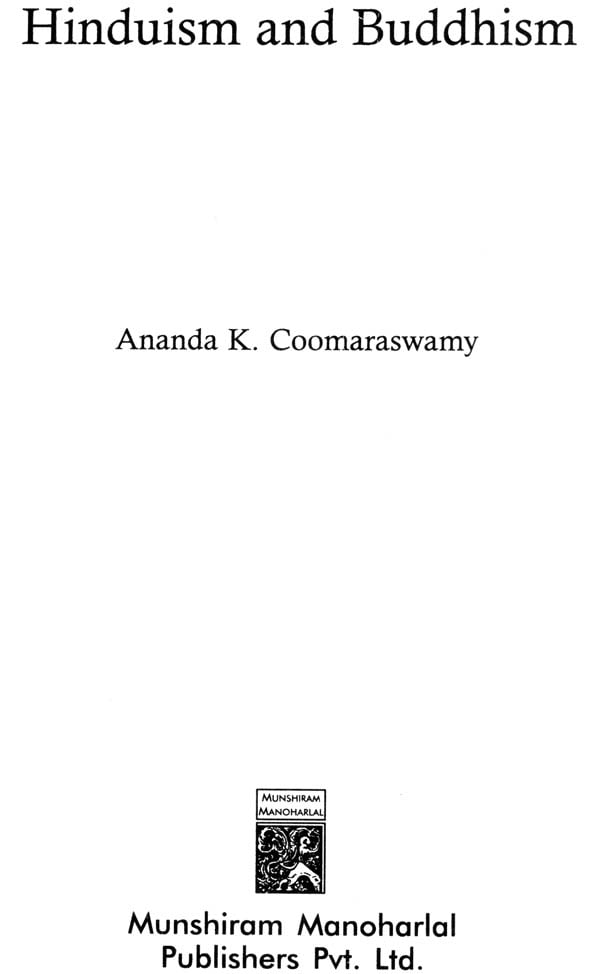
From the Jacket
Ananda Coomaraswamy's Hinduism and Buddhism, like all his writings, is a masterpiece. In this work he sets forth his ideas with his usual depth and insight to discard the wrong notions about the divergence in the basic philosophies of these two major religions that have been propounded by European scholars and by Indians trained in our modern skeptical and evolutionary modes of thought. In Hinduism and Buddhism Coomaraswamy has tried to show that the essentials of these religions are the same and form what may be called as the Philosophia Perennis or the Eternal Philosophy. His contention is that Hinduism and Buddhism are not contradictory but the one is a development out of the massive foundation of the other. It is only to those who have made a superficial study that Buddhism seems different from Brahmanism; the more profound is the study, the more difficult it becomes to distinguish Buddhism from Brahmanism.
Hinduism and Buddhism is divided into two parts with copious notes added to each part. In the first part, dealing with Hinduism, Coomaraswamy has examined in detail the fundamental concepts like karma, maya, reincarnation, the darsanas, the sacrifice, social order, etc., and in the second part, dealing with Buddhism, he shows that in essentials it was the same as Hinduism and that Buddha did not strive 'to establish a new order to restore an older form.' In sum, the basic philosophy of great religions is drawn from a common fount and the new religions are but the recognition of the common thought manifested under different forms.
About the Author
Ananda Kentish Coomaraswamy, the greatest among the Indian Art-historians, was born in Colombo on August 22, 1877. After graduating from the University of London with Honours in Geology in 1900, he became the Director of the Mineralogical Survey of Ceylon. During his three year's stay in Ceylon, he formed the Ceylon Social Reformation Society and led the University Movement in which he initiated the national education, teaching of vernaculars in all schools and revival of Indian culture. Between 1906 and 1917, when he joined as the Curator of Indian Art at the Boston Museum he was busy lecturing on Indian art and formed societies for the study of Indian Art. In 1938, he became the Chairman of National Committee for India's Freedom. His contributions on Indian philosophy, religion, art and iconography, painting and literature are of the greatest importance as were his contributions on music, science and Islamic art. He died on September 9, 1947.
Brahmanism or Hinduism is not only the oldest of the mystery religions, or rather metaphysical disciplines, of which we have a full and precise knowledge from literary sources, and as regards the last two thousand years also from iconographic documents, but also perhaps the only one of these that has survived with an unbroken tradition and that is lived and understood at the present day by many millions of men, of whom some are peasants and others learned men well able to explain their faith in European as well as in their own languages. Nevertheless, and although the ancient and modern scriptures and practises of Hinduism have been examined by European scholars for more than a century, it would be hardly an exaggeration to say that a faithful account of Hinduism might well be given in the form of a categorical denial of most of the statements that have been made about it, alike by European scholars and by Indians trained in our modern sceptical and evolutionary modes of thought.
One would begin, for example, by remarking that the Vedic doctrine is neither pantheistic nor polytheistic, nor a worship of the powers of Nature except in the sense that Natura naturans est Deus and all her powers but the names of God's acts; that karma is not "fate" except in the orthodox sense of the character and destiny that inhere in created things themselves, and rightly understood, determines their vocation; that maya is not "illusion". but rather the maternal measure and means essential to the manifestation of- a quantitative, and in this sense "material", world of appearances, by which we may be either enlightened or deluded according to the degree of our own maturity; that the notion of a "reincarnation" in the popular sense of the return of deceased individuals to rebirth on this earth represents only a misunderstanding of the doctrines of heredity, transmigration and regeneration; and that the six darsanas of the later Sanskrit "philosophy" are not so many mutually exclusive "systems" but, as their name implies, so many "points of view" which are no more mutually contradictory than are, let us say, botany and mathematics. We shall also deny in Hinduism the existence of anything unique and peculiar to itself, apart from the local coloring and social adaptations that must be expected under the sun where nothing can be known except in the mode of the knower. The Indian tradition is one of the forms of the Philosophia Perennis, and as such, embodies those universal truths to which no one people or age can make exclusive claim. The Hindu is therefore perfectly willing to have his own scriptures made use of by others as "extrinsic and probable proofs" of the truth as they also know it. The Hindu would argue, moreover, that it is upon these heights alone that any true agreement of differing cultures can be effected.
We shall try now to state the fundamentals positively: not, how- ever, as this is usually done in accordance with the "historical method" by which the reality is more obscured than illuminated, but from a strictly orthodox point of view, both as to principles and their application; endeavouring to' speak with mathematical precision, but never employing words of our own or making any affirmations for which authority could not be cited by chapter and verse; in this way making even our technique characteristically Indian.
We cannot attempt a survey of the religious literature, since this would amount to a literary history of India, where we cannot say where what is sacred ends and what is secular begins, and even the songs of bayaderes and showmen are the hymns of the Fideles de 1' Amour. Our literary sources begin with the Rigveda (1200 or more B.C.), and only end with the most modern Vaisnava, Saiva and Tantric theological treatises. We must, however, especially mention the Bhagavad Gita as probably the most important single work ever produced in India; this book of eighteen chapters is not, as it has been sometimes called, a "sectarian" work, but one universally studied and often repeated daily from memory by millions of Indians of all persuasions; it may be described as a compendium of the whole Vedic doctrine to be found in the earlier Vedas, Brahmanas and Upanisads, and being therefore the basis of all the later developments, it can be regarded as the focus of all Indian religion. To this we must add that the pseudo-historical Krishna and Arjuna are to be identified with the mythical Agni and Indra.
Contents:
I.
HINDUISM
Introduction
The Myth
The Way of Works
The Social Order
Notes to Hinduism
II.
BUDDHISM
Introduction
The Myth
The Doctrine
Notes to Buddhism
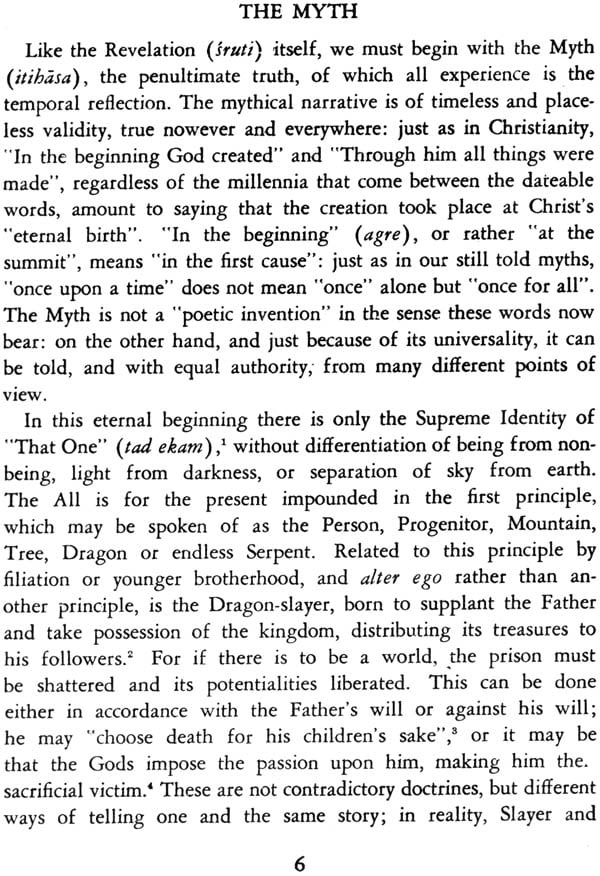
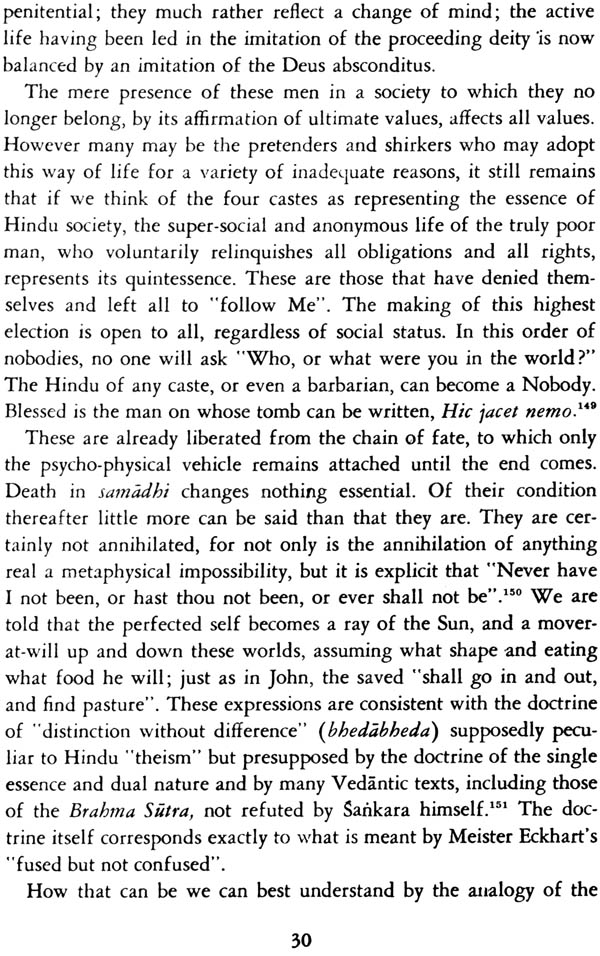
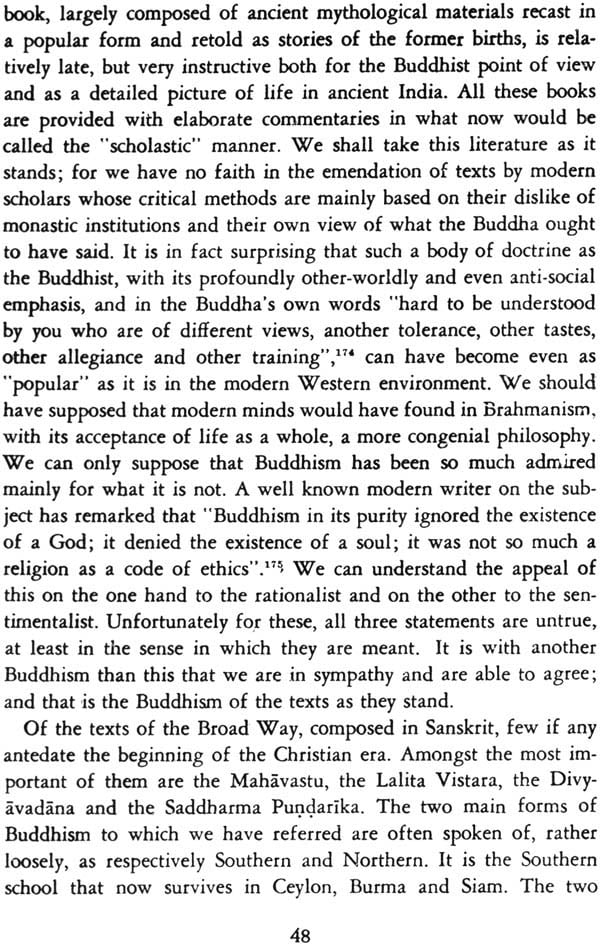
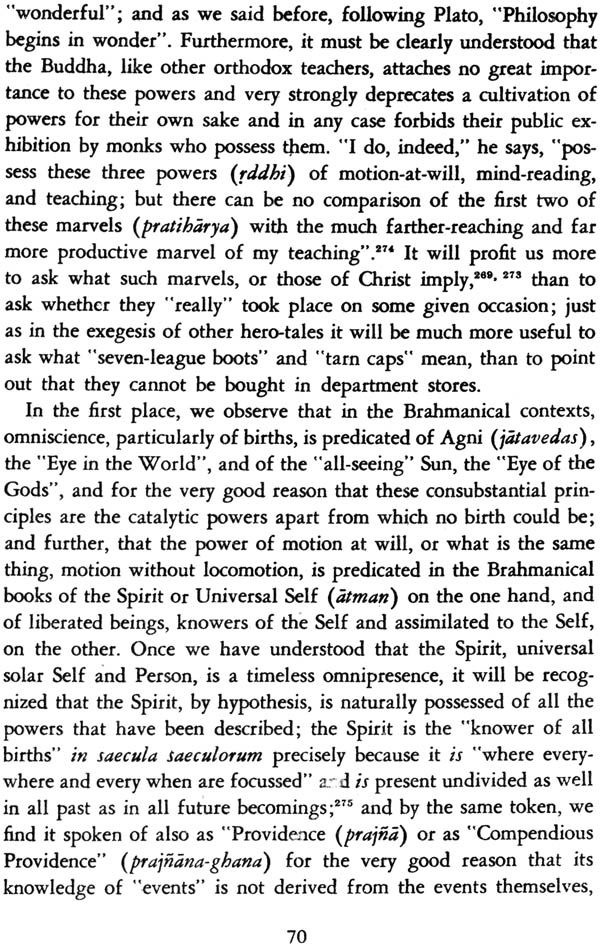
Click Here to view more books by Ananda K. Coomaraswamy





